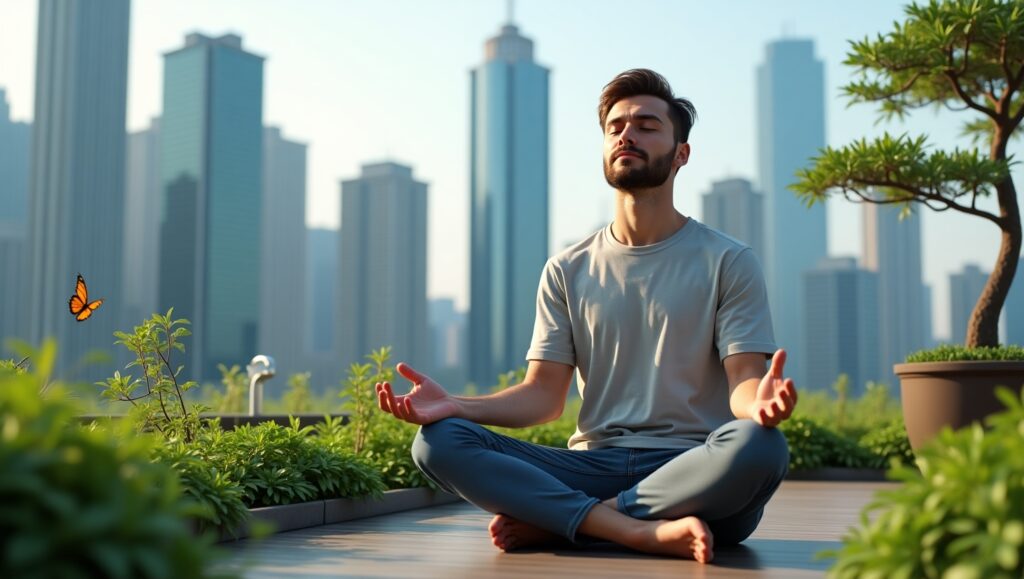Introduction: Rediscovering Our Place in Nature
From the earliest moments of human existence, nature has been our cradle, our sustenance, and our silent teacher. Yet in the rush of modern life, many have forgotten the depth of the nature and human relationship—a bond that is as vital today as it was for our ancestors. This article journeys through the emotional, psychological, and practical layers of our connection with nature, weaving scientific research and human stories into a tapestry that reveals why rekindling this bond is essential for our personal and collective well-being.
The Foundations of the Nature and Human Relationship
A Legacy Written in Earth and Sky
Human beings have always been shaped by the natural world. Our earliest myths, rituals, and survival strategies were born from the rhythms of the seasons, the cycles of the moon, and the abundance or scarcity of wild places. The land provided not only food and shelter but also a sense of belonging and identity. Even as civilizations rose and fell, the underlying thread remained: to be human is, fundamentally, to be a part of nature.
The Science of Connection: Biophilia and Beyond
The concept of biophilia—our innate affinity for nature—has gained traction in recent decades. Evolutionary biology, psychology, and environmental sciences converge on the idea that humans are hardwired to seek connection with the natural world. This connection is not merely philosophical; it is embedded in our biology, influencing our emotions, thoughts, and behaviors.
- Cognitive Connection: How we perceive our place in the natural world.
- Affective Connection: The emotions we experience in nature—wonder, peace, awe.
- Behavioral Connection: The actions we take to protect and engage with the environment.
The Modern Disconnect: Alienation from Nature
The Rise of Urban Life
With the Industrial Revolution, humans began to drift from their roots. Urbanization, technological advancement, and the pursuit of convenience led to a growing alienation from nature. Today, it is estimated that people spend up to 90% of their lives indoors, surrounded by artificial environments that dull our senses and disconnect us from the living world.
The Psychological Toll
This separation has consequences. Research shows that a lack of connection with nature can lead to increased stress, anxiety, and a sense of emptiness. The more we isolate ourselves from green spaces and wild places, the more we risk losing touch with a vital source of healing and inspiration.
Healing the Divide: The Benefits of Reconnecting with Nature
Nature and Human Health: Evidence from Science
The benefits of restoring the nature and human relationship are profound and well-documented:
- Reduced Stress: Time in nature lowers blood pressure, heart rate, and stress hormones, promoting relaxation and emotional balance.
- Enhanced Well-being: Exposure to natural environments boosts mood, vitality, and life satisfaction.
- Improved Cognitive Function: Nature restores attention, enhances creativity, and helps us cope with pain and adversity.
- Physical Health: Regular contact with green spaces is linked to lower rates of chronic illness and greater longevity.
Nature Therapy: A Pathway to Wellness
Practices like forest bathing, gardening, and mindful walks in nature—collectively known as nature therapy or eco-therapy—have emerged as powerful tools for healing10. These activities not only foster well-being but also deepen our sense of belonging and responsibility toward the natural world.
Stories of Connection: Human Lives Transformed by Nature
A Walk in the Woods: Finding Peace After Loss
After the loss of her partner, Maya found herself adrift in grief. Traditional therapy offered some solace, but it was her daily walks through a nearby forest that began to mend her spirit. The rustle of leaves, the scent of earth, and the sight of sunlight filtering through branches became a silent companion, reminding her that life continues, even after heartbreak.
The Urban Gardener: Cultivating Hope in Concrete Jungles
In the heart of a bustling city, Daniel transformed a vacant lot into a community garden. For him and his neighbors, tending to plants was more than a hobby—it was an act of reclaiming agency, beauty, and connection in an environment that often felt cold and impersonal. The garden became a sanctuary, a place where people of all ages rediscovered the joys of nurturing life.
Children and Nature: Seeds of Empathy
Studies show that children who spend time in nature develop greater empathy, creativity, and resilience69. Outdoor play fosters curiosity and a sense of wonder, laying the foundation for lifelong stewardship of the earth.

The Dimensions of Nature Connectedness
Emotional and Spiritual Fulfillment
Nature offers a unique kind of solace that is difficult to replicate elsewhere. The feeling of awe when gazing at a mountain range, the serenity of sitting by a quiet lake, or the exhilaration of a storm—all these experiences nourish our souls and remind us of our place in the larger web of life43.
Identity and Belonging
For many, nature is not just a backdrop but a central part of identity. Indigenous cultures around the world have long recognized the land as a living relative, deserving of respect and gratitude. This worldview fosters a sense of belonging that transcends individual existence, connecting generations through shared stories and rituals.
Pro-Environmental Behavior: The Ripple Effect
A deeper connection to nature often leads to more sustainable choices. People who feel bonded with the environment are more likely to engage in behaviors that protect and preserve it—recycling, conserving water, supporting conservation efforts, and advocating for policy change. This ripple effect is crucial in addressing the environmental crises of our time.
Barriers to Connection: Challenges in the Modern World
Urbanization and Technology
While cities offer many opportunities, they can also isolate us from the rhythms of the natural world. The constant hum of technology, artificial lighting, and limited access to green spaces make it harder to experience the restorative power of nature.
Socioeconomic Inequality
Access to nature is not equally distributed. Marginalized communities often have fewer parks, trees, and safe outdoor spaces, compounding health disparities and limiting opportunities for connection.
Cultural Shifts
As societies become more urbanized and digitized, traditional knowledge and practices that fostered intimacy with nature are at risk of being lost. Reclaiming these traditions is essential for restoring balance.
Rekindling the Bond: Practical Steps for Individuals and Communities
For Individuals
- Spend Time Outdoors: Even brief walks in nature can boost mood and creativity.
- Practice Mindfulness: Engage all senses—listen to birdsong, feel the breeze, notice the colors and textures around you.
- Create Green Spaces: Plant a garden, nurture houseplants, or volunteer in community greening projects.
- Learn and Reflect: Read about local ecosystems, wildlife, and indigenous perspectives on nature.
For Communities
- Design Accessible Green Spaces: Ensure parks and natural areas are available to all residents, regardless of income or neighborhood.
- Support Environmental Education: Foster programs that connect children and adults with local environments.
- Celebrate Nature Together: Organize festivals, clean-up days, and cultural events that honor the natural world.
The Future of the Nature and Human Relationship
A Call for Stewardship
The challenges facing our planet—climate change, biodiversity loss, pollution—are reminders that the nature and human relationship is not just about personal well-being but about collective survival. By rekindling our bond with nature, we cultivate the empathy and responsibility needed to protect the earth for future generations.
Toward a New Paradigm
Imagine a world where cities are designed with nature at their heart, where every child has access to wild places, and where the health of the land is seen as inseparable from the health of its people. This vision is not only possible but necessary.
Conclusion: Coming Home to Ourselves
The journey to reconnect with nature is, ultimately, a journey to reconnect with ourselves. In the rustle of leaves, the song of birds, and the quiet majesty of a starry sky, we find echoes of our own longing for meaning, belonging, and peace. The nature and human relationship is not a relic of the past but a living, evolving bond—one that holds the key to healing our bodies, our communities, and our world.
Let us step outside, breathe deeply, and remember: we are not separate from nature. We are, and always have been, a part of its unfolding story.
References:
https://findingnature.org.uk/2014/12/15/what-is-a-connection-to-nature/
https://en.wikipedia.org/wiki/Nature_connectedness
https://pmc.ncbi.nlm.nih.gov/articles/PMC7027494/
https://www.mentalhealth.org.uk/our-work/research/nature-how-connecting-nature-benefits-our-mental-health
https://pmc.ncbi.nlm.nih.gov/articles/PMC9754067/
https://www.frontiersin.org/articles/10.3389/fpsyg.2022.864836/full
https://earth.org/human-connection-with-nature/
https://pmc.ncbi.nlm.nih.gov/articles/PMC10774321/
https://www.sciencedirect.com/science/article/abs/pii/S0265931X03001802
https://pmc.ncbi.nlm.nih.gov/articles/PMC5114301/


